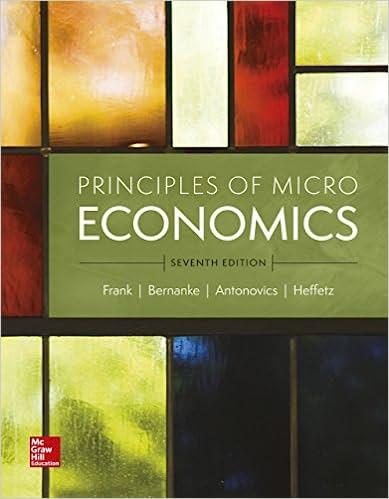Question
1. A monopolist has an inverse demand curve given by p(y) = 12 y and a cost curve given by c(y) = y^2 ( show
1. A monopolist has an inverse demand curve given by p(y) = 12 y and a cost curve
given by c(y) = y^2
( show math)
a. What will be its profit-maximizing level of output and what price will the firm
charge? (1 mark)
b. Suppose the government decides to put a tax on this monopolist so that for each
unit it sells, it must pay the government $2. What will be its profit maximizing
output under this form of taxation? (1 mark)
2.Assume that the market demand curve for a good is Q(p) = 100 - 0.5p. (show math)
a. give an expression for the inverse demand curve (1 mark)
b. Assume that P=$50 and Q= 75 units. Find the price elasticity of demand and (1 mark)
provide a numerical interpretation for this elasticity.
3.Consider the cost function c(y) = 4y^2 + 16 (Show math)
a. Find the average cost function (1 mark)
b. Find the marginal cost function (1 mark)
c. Find the level of output that yields the minimum average cost of production (1 mark)
d. Find the average variable cost function (1 mark)
e. At what level of output does average variable cost equal marginal (1 mark)
cost?
4.A firm has a production function given by f(x1, x2, x3, x4) = mins{x1 + x2, x3 + 2x4}. Find
the cost function for this technology. (2 points)
Step by Step Solution
There are 3 Steps involved in it
Step: 1

Get Instant Access to Expert-Tailored Solutions
See step-by-step solutions with expert insights and AI powered tools for academic success
Step: 2

Step: 3

Ace Your Homework with AI
Get the answers you need in no time with our AI-driven, step-by-step assistance
Get Started


